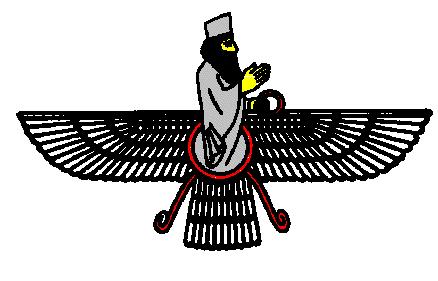

Norooz, in word, means "new day". It is the new day that starts the year, traditionally the exact astronomical beginning of the Spring.
For thousands of years, Norooz was rotating. The Zoroastrian religious calendar, used before Islam, consisted of 12 months with 30 days each, making 360 days, plus a “stolen five” (Panjeh-ye Mostareghe) days that was held at the end of each year, adding up to 365 days. Early astronomers were not aware of the leap years and did not add the one day more every four years, thus caused the rotation of Norooz. The other fact was that during the anarchic times and moments of unrest in the country such as time of Alexander, or end of Ashkanids, people forgot to add the five stolen days, and this resulted in another problem in the calendar. During the Sasanid era Tansar, the head priest (Mubedhan-i Mubedh) of Ardeshir I unsuccessfully tried to organise the calendar. There are accounts of Norooz in Autumn, winter or even Summer!
The first person who re-organised the calendar successfully was Omar Khayyam, the mathematician and astronomer of 5th century H (11-12th AD). He drew a chart for the year and put the start of the year at the moment of Aries’ entrance to the house of Sun. He made a calendar of 6 months with 31 days, and 6 months with 30 days making a total 365 days, and suggested the addition of 1 day every four years and also addition of a months every 13,000 years. This is the most complete calendar ever made. Khayyam called it “the Jalali Calendar” because of “Jalal” al-Din Malekshah Saljuqi, his patron king. Currently, his calendar is called the “Khorshidi”(Sun based) calendar, as oppose to the Arabic “Ghamari” (moon based) calendar.
Although Khayyam was Iranian and he created this calendar based on the pre-Islamic calendar of Zoroastrians, it was not used widely in Iran until the 1925 AD(1304 HS) when Reza Shah Pahlavi ordered it to be used instead of “Ghamari” calendar. In the process of finding names for the months, there are some interesting mistakes happened which are note-worthy. The first month is originally called “Fravartishn”, but when they wanted to choose it as the name, they found it too hard, so they made it shorter by calling it Farvardin. Second month was originally Ardibehesht, but it became Ordibehesht. Fifth month, Mordad, was suppose to be Amordad, but the Mordad form sounded better. Seventh months Mehr was “Mithr” at first, but ‘th’ sound is hard to pronounce in Farsi, so they chose the acceptable replacement of ‘h’. Azar, the ninth months was “Atar” at first, but it sounds too Zoroastrian, so ‘z’ was found to be more acceptable. And finally, the last month was “Esfandarmadh(z)”, but oh god, who is going to say that! So “Esfand” was thought of as more suitable, although it is the name of a spice!
Now, in ahistorical sense, Norooz is the oldest Iranian holiday. Together with Mehregan (entrance of Libra to the house of Sun), it was one of the “two” new years of ancient Aryans. Mehregan was the first day of the “cold” year (Autumn and Winter), and Norooz was the start of the “warm” year (Spring and Summer). It is said that Norooz is chosen as the official holiday by King Yama (Jamsheed), the ancient Iranian king who is the hero of the mythological story of expanding the earth. According to the story, when Yama expanded the earth three times, he ordered the day of the last expantion to be called Norooz, a New Day for the Iranian race.
The truth most likely lies somewhere in between this story and the fact that Norooz is the beginning of the Spring. It could be that Norooz was already a holiday for the Aryans, but when it coincided with an important event in the reign of Jamsheed, it was chosen to be the "special" holiday.
What ever it might have been, Norooz became the most important holiday in Iran after the Islam. Comparing to Norooz, Mehregan and Sadeh (another important Iranian holiday) lost their importance. The selection of Norooz as the only standing "Iranian" holiday after Islam might also be a direct result of the limitations imposed on Iranians by Moselm rulers. For Iranians after Islam, Norooz was a sign of holding on to the national values. It helped them to remember their heritage in spite of cultural attacks of Arabs, Mongols, Turks, and Westerners. Norooz continues its role of national pride in this world of cultural trades and influences. For the Iranians out side home, Norooz is an element of nostalgia and a reminder of home, at least once a year. Although Norooz has some outside influences like Qoran and the Arabic prayer during the beginning of the year, but it still holds the distinctively Iranian values of health, green-ness, life, light, and happiness. Noroozetan Pirooz.